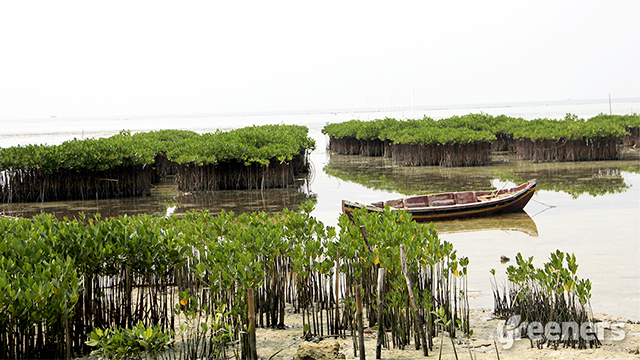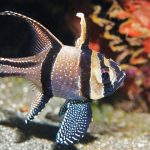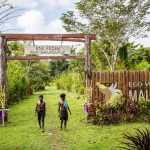Jakarta (Greeners) – Surabaya administration plans to develop mangrove botanical garden, said Tri Rismaharini, Mayor of Surabaya, at the launch of Jaga Bhumi, in Jakarta, on Tuesday (6/6), adding that she is also preparing 4,450 hectares of land to be planted.
“It will be the first mangrove botanical garden in Indonesia,” she added.
Furthermore, she said that the area would be planted 250,000 mangrove seeds to cover 4,450 hectares every year. Mangrove, she added, was chosen because the plant holds many function, including breeding and fishing ground.
READ ALSO: Indonesian Botanical Gardens Foundation Launches Jaga Bhumi Movement
“The area was being allocated by previous mayor and turning it into houses and others. I want to return it to its rightful function, especially mangrove is the natural defense from tides,” she said.
Currently, they have been setting up the master plan. Mayor Risma hoped that the mangrove botanical garden can restore Surabaya coastal areas for the location will be at the eastern coastal area of Surabaya.
“The management will be under regional government. LIPI is not included. There will be no special budget allocation and the target will not be long. We’ll only develop jogging track and other facilities,” she said.
Meanwhile, Director of Land and Water Conservation, Ministry of Environment and Forestry, M. Firman, said that from 15 million hectares of total mangrove in the world, Indonesia covers 3.4 million hectares however 1.8 million or 54 percent is degrading.
READ ALSO: Two Centuries, This is Bogor Botanical Garden’s Contribution for Indonesia…
However, as the largest mangrove ecosystem in the world, Indonesia keeps on protecting the mangrove forest, said Firman. It would need a minimum of 50,000 hectares of areas to be rehabilitated each year. Unfortunately, government’s budget allocation can only cover 500 hectares per year.
Other functions such as fish farming, housing, plantation, industry and harbor infrastructure, he added, more often than not neglected the mangrove existence though its function as natural fortress from abrasion. Tsunami disaster can be reduced if mangrove vegetation is good.
“Economically, mangrove can be breeding location for commercial animals, such as fishes, shrimps, and crabs. Mangrove also stores more carbon than terrestrial forestry so its role in global climate change mitigation is very important,” he said.
Reports by Danny Kosasih



















































